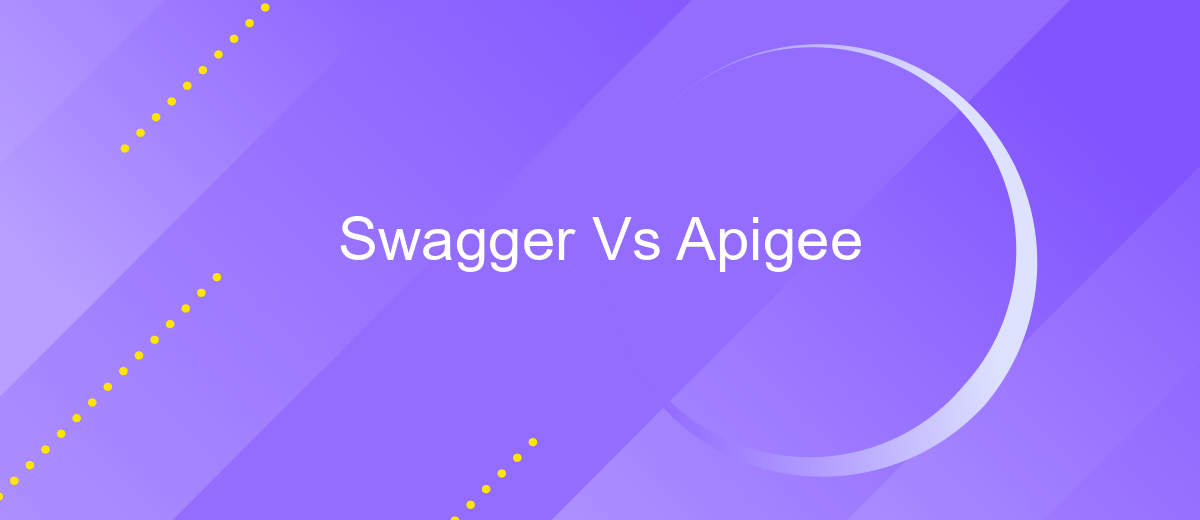Swagger Vs Apigee
In the rapidly evolving landscape of API management, choosing the right tool can significantly impact your development workflow. Swagger and Apigee are two prominent platforms that offer distinct features for designing, documenting, and managing APIs. This article delves into a comparative analysis of Swagger and Apigee, highlighting their strengths and weaknesses to help you make an informed decision.
Swagger
Swagger is an open-source framework that simplifies the development of APIs by offering a comprehensive suite of tools for API documentation, design, and testing. It allows developers to describe the structure of their APIs using the OpenAPI Specification, making it easier to visualize and interact with API endpoints.
- API Documentation: Swagger automatically generates interactive API documentation that helps developers understand and test API endpoints effortlessly.
- Code Generation: It can generate client libraries, server stubs, and API documentation from an OpenAPI Specification, saving time and reducing errors.
- Interactive UI: Swagger UI provides a web-based interface to interact with the API, facilitating testing and debugging.
For those looking to integrate APIs seamlessly, services like ApiX-Drive can be highly beneficial. ApiX-Drive simplifies the process of connecting various applications and automating workflows without requiring extensive coding knowledge. By leveraging tools like Swagger and ApiX-Drive, developers can enhance their productivity and ensure robust API integrations.
Apigee

Apigee is a comprehensive API management platform developed by Google Cloud that enables organizations to design, secure, deploy, and scale APIs. It offers robust features such as traffic management, security, analytics, and monetization, making it a preferred choice for enterprises looking to expose their services to external and internal developers. Apigee's intuitive interface and powerful capabilities facilitate the creation and management of APIs, ensuring seamless integration and consistent performance across various applications and services.
One of the key advantages of Apigee is its ability to handle complex integrations with ease. For instance, services like ApiX-Drive can be leveraged to automate data flows between different applications, further enhancing the efficiency of API management. By using Apigee in conjunction with ApiX-Drive, businesses can streamline their processes, reduce manual intervention, and ensure that their APIs are always up-to-date and functioning optimally. This synergy between Apigee and integration services like ApiX-Drive offers a powerful solution for modern enterprises aiming to stay competitive in a rapidly evolving digital landscape.
Comparison Table

When comparing Swagger and Apigee, it's essential to understand their unique features and capabilities. Both tools serve different purposes and cater to various needs in API management and development.
- Purpose: Swagger is primarily used for API documentation and design, while Apigee is a comprehensive API management platform.
- Ease of Use: Swagger offers a user-friendly interface for designing APIs, whereas Apigee provides a more complex suite of tools for managing APIs at scale.
- Integration: Swagger integrates seamlessly with various API development tools, while Apigee offers robust integration options with services like ApiX-Drive for automated workflows.
- Security: Apigee provides advanced security features, including threat protection and OAuth support, which are more extensive compared to Swagger.
- Analytics: Apigee includes detailed analytics and monitoring tools, whereas Swagger focuses more on API design and documentation.
In conclusion, Swagger is ideal for developers looking for straightforward API design and documentation tools, while Apigee is better suited for enterprises needing comprehensive API management solutions with advanced security and analytics. For those looking to streamline integrations, services like ApiX-Drive can enhance the capabilities of both Swagger and Apigee.
Pros and Cons

When comparing Swagger and Apigee, it's essential to understand their unique strengths and weaknesses. Swagger is a popular open-source tool for designing, building, and documenting RESTful APIs. Apigee, on the other hand, is a robust API management platform by Google that offers advanced features for API lifecycle management.
Swagger excels in simplicity and ease of use, making it an excellent choice for developers who need to quickly create and test APIs. Apigee is more suited for enterprises requiring comprehensive API management, including security, analytics, and monetization.
- Swagger Pros: Easy to use, open-source, great for API documentation.
- Swagger Cons: Limited in advanced management features.
- Apigee Pros: Advanced API management, robust security, detailed analytics.
- Apigee Cons: Higher cost, steeper learning curve.
For those looking to integrate multiple services and streamline workflows, tools like ApiX-Drive can complement both Swagger and Apigee. ApiX-Drive simplifies the automation of data transfers between different applications, enhancing the overall efficiency of API management.
Conclusion
In conclusion, both Swagger and Apigee offer robust solutions for API management and development, each with its own strengths. Swagger excels in simplifying API design and documentation, making it an excellent choice for developers who need a straightforward tool to create and maintain APIs. On the other hand, Apigee provides a comprehensive suite of features for API management, including analytics, security, and monetization, making it suitable for enterprises that require advanced capabilities and scalability.
Choosing between Swagger and Apigee ultimately depends on your specific needs and objectives. For teams focused on ease of use and rapid development, Swagger is an ideal option. Conversely, for organizations looking for a full-fledged API management platform with extensive functionalities, Apigee stands out. Additionally, integrating these tools with services like ApiX-Drive can further streamline your workflow by automating data transfers and enhancing connectivity between various applications, thus maximizing the efficiency of your API ecosystem.
FAQ
What are the primary differences between Swagger and Apigee?
Can Swagger and Apigee be used together?
Which tool is better for API documentation?
How do Swagger and Apigee handle API security?
Are there tools available to automate and integrate workflows between Swagger and Apigee?
Time is the most valuable resource in today's business realities. By eliminating the routine from work processes, you will get more opportunities to implement the most daring plans and ideas. Choose – you can continue to waste time, money and nerves on inefficient solutions, or you can use ApiX-Drive, automating work processes and achieving results with minimal investment of money, effort and human resources.

